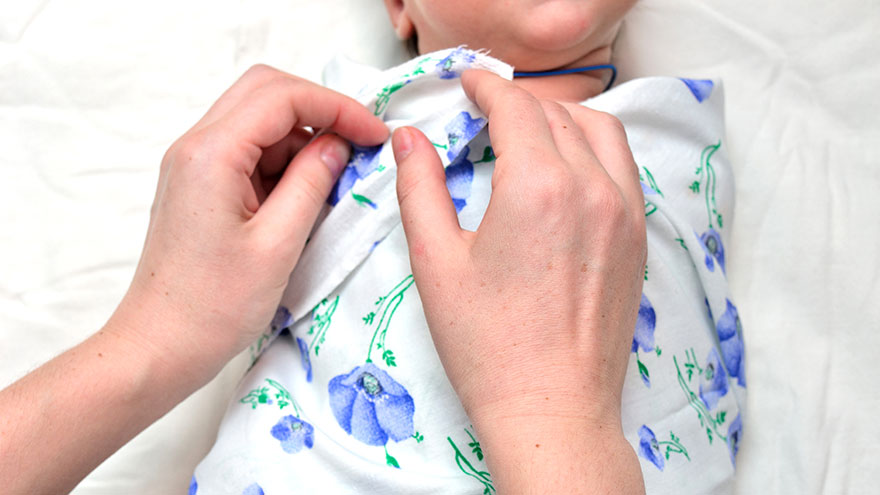How to Swaddle a Newborn
The American Academy of Pediatrics and the American Public Health Association have both spoken out about how dangerous swaddling your baby can be. According to Dr. Harvey Karp, author of “The Happiest Baby on the Block,” it’s only unsafe swaddling that actually puts babies at risk.
Swaddling can cause a fussy baby to calm down and prevent a baby from startling awake, but knowing how to swaddle correctly can mean the difference between a safe swaddle and a health risk for your baby.
Things You’ll Need
- Receiving blanket
6 Steps to Swaddle a Newborn

1. Spread the blanket out on a flat, soft surface.
2. Fold over one corner of the blanket so that the corner reaches approximately the middle of the blanket.
3. Place your baby on the blanket.
Your baby’s shoulders should be right on the folded edge.
4. Put one hand on your baby to keep her still.
Pick up the right corner of the blanket with your other hand, and pass it across your baby’s body. Tuck it securely under your baby’s left side, leaving the left arm unswaddled.
5. Bring your baby’s left arm down.
Pass the left corner of the blanket over your baby’s body, tucking the remaining material securely under your baby’s right side.
6. Pull the bottom corner of the blanket up and tuck it into the fabric beneath your baby’s chin.
The pocket created by this step should leave enough room for your baby’s legs and hips to move comfortably.
Tips and Warnings
- If you find swaddling too difficult, you can try a hook-and-loop-fastener swaddle blanket instead.
- According to the Mayo Clinic, you should not swaddle a baby with dysplasia, which is dislocation of the hip.
- Never swaddle a baby in a very heavy blanket. This can cause the baby to overheat, even in cold weather.
- According to Kim West, baby sleep expert, you should consider breastfeeding or bottle feeding your baby unswaddled. This gives the baby a chance for some physical contact with the parent or caregiver.
You Might Also Like :: How to Wash an Infant

